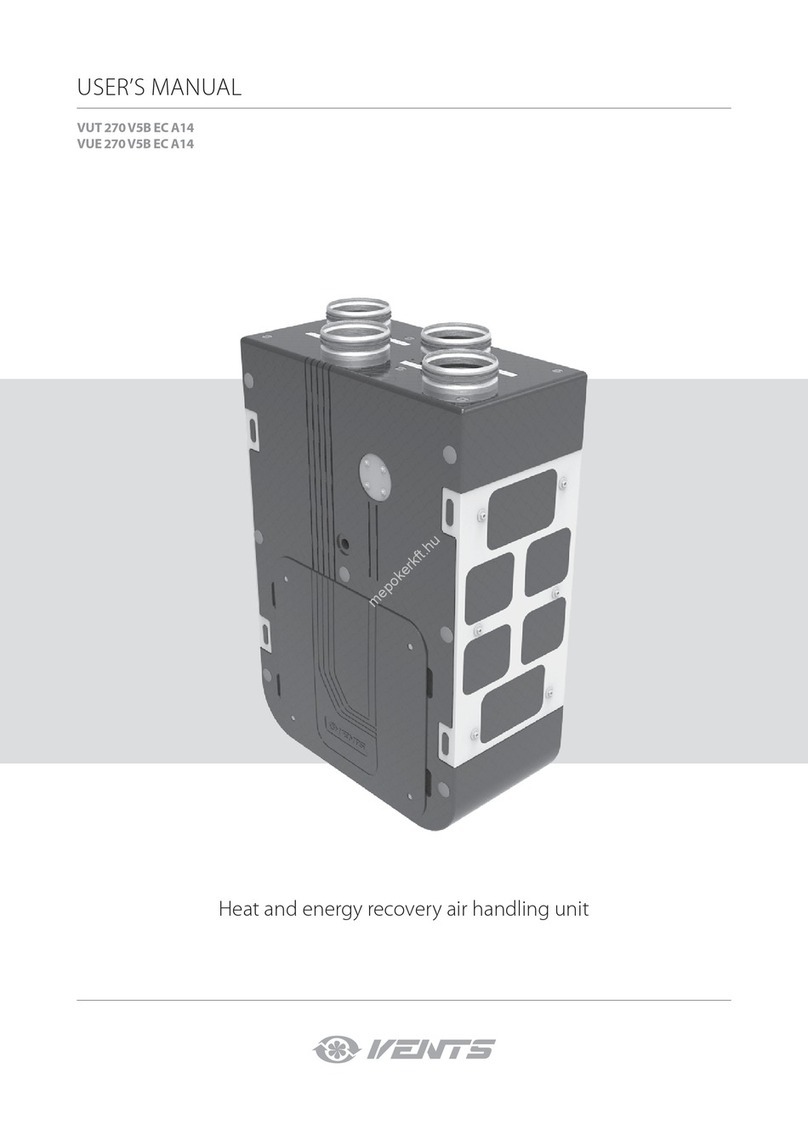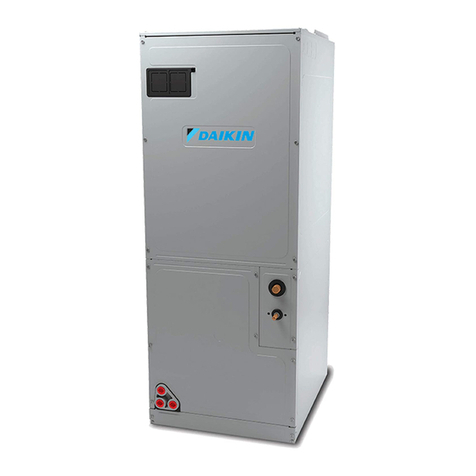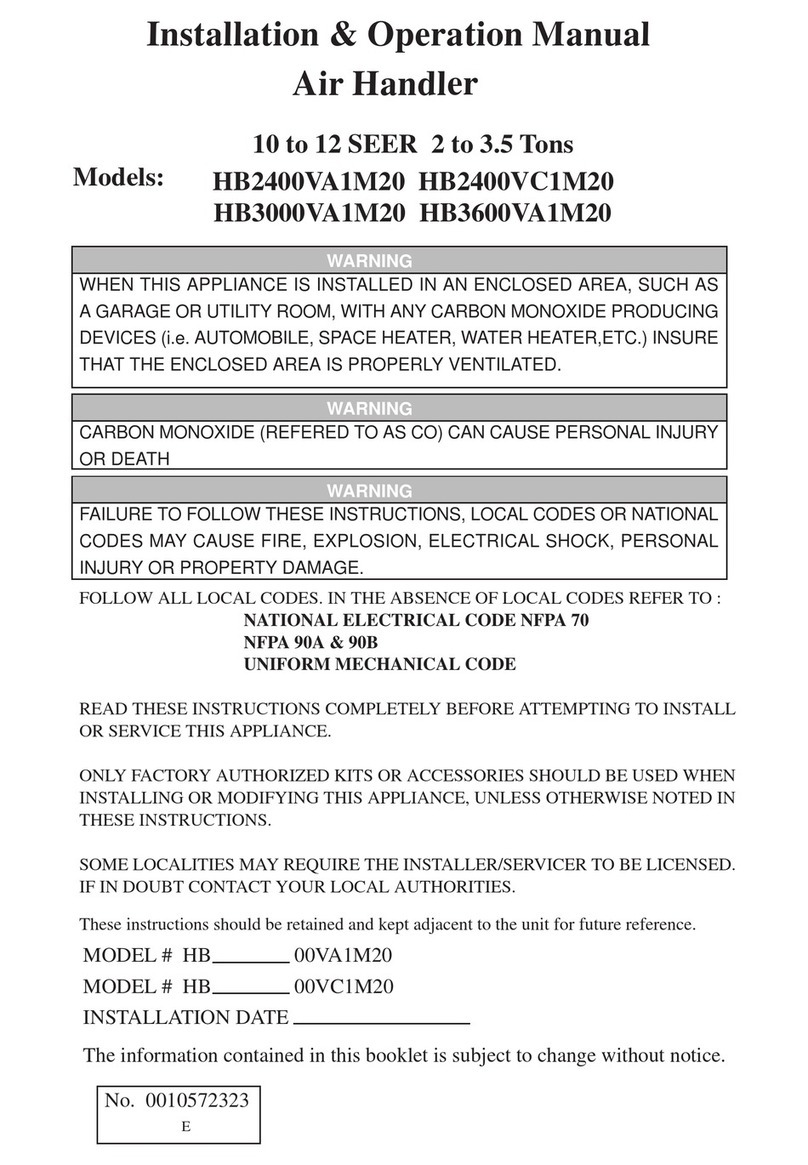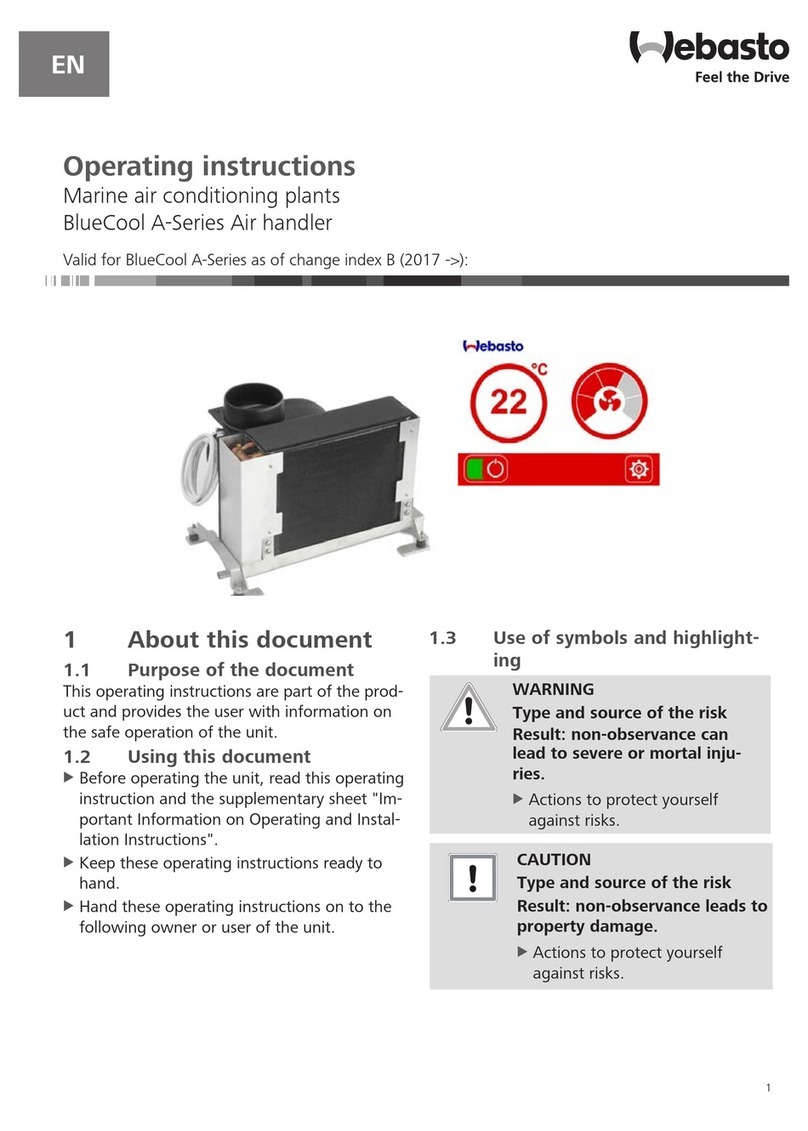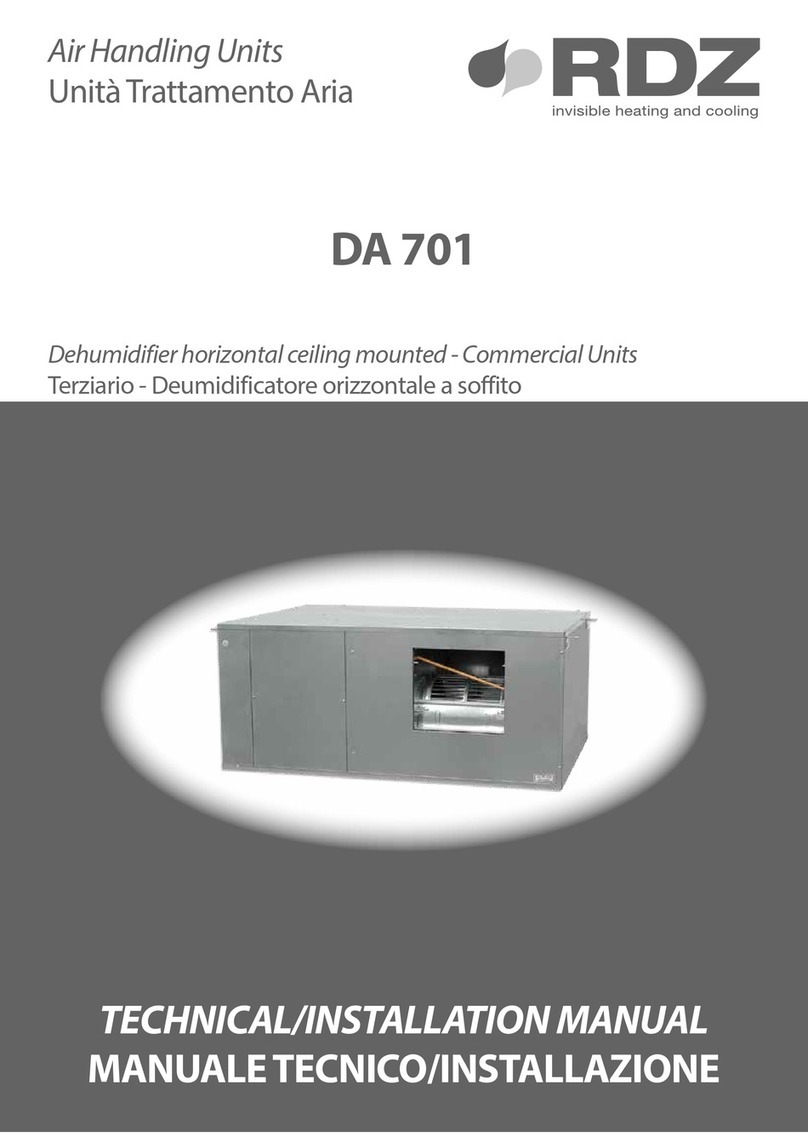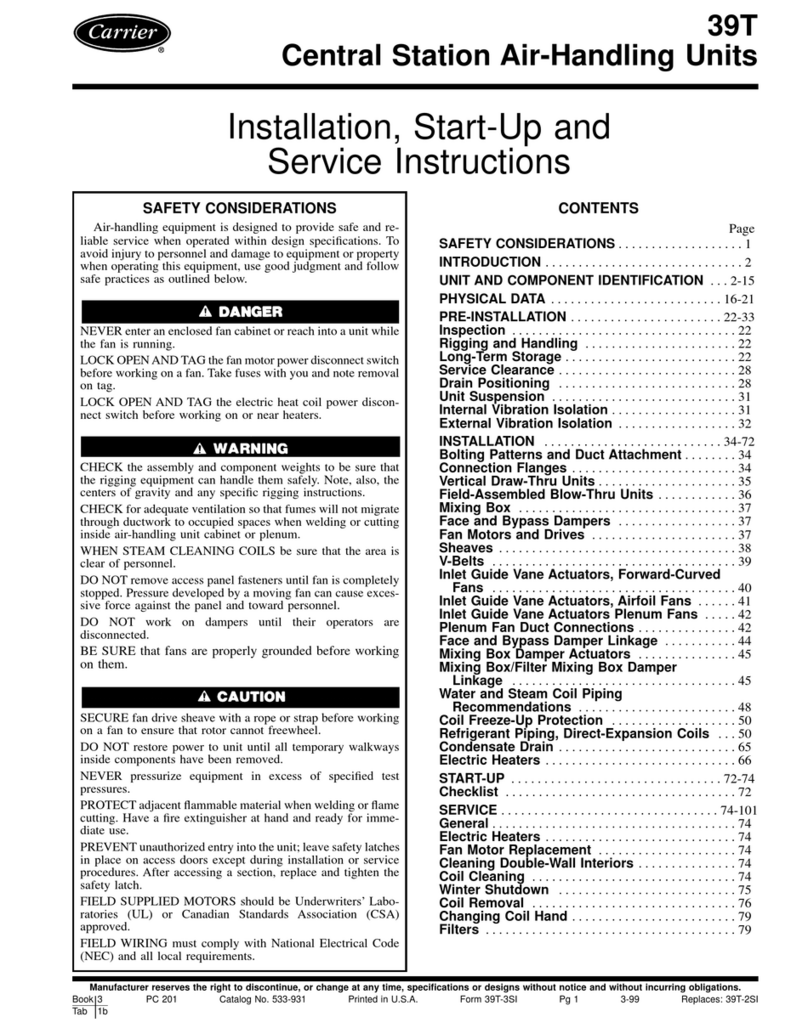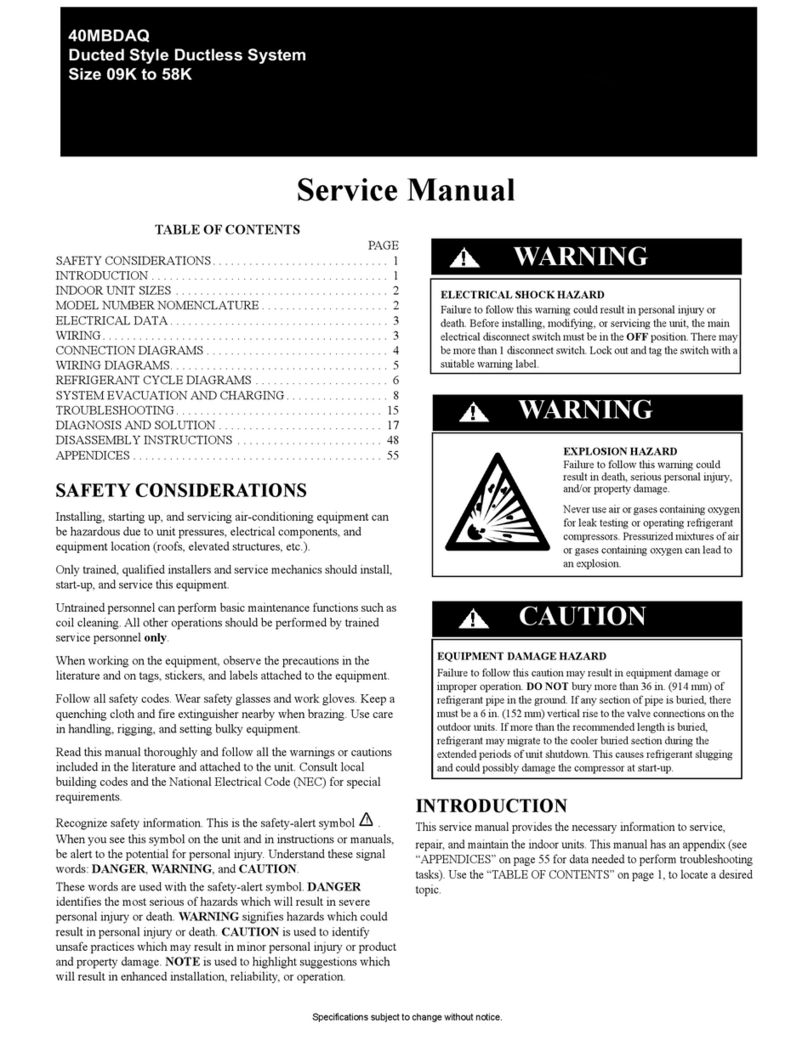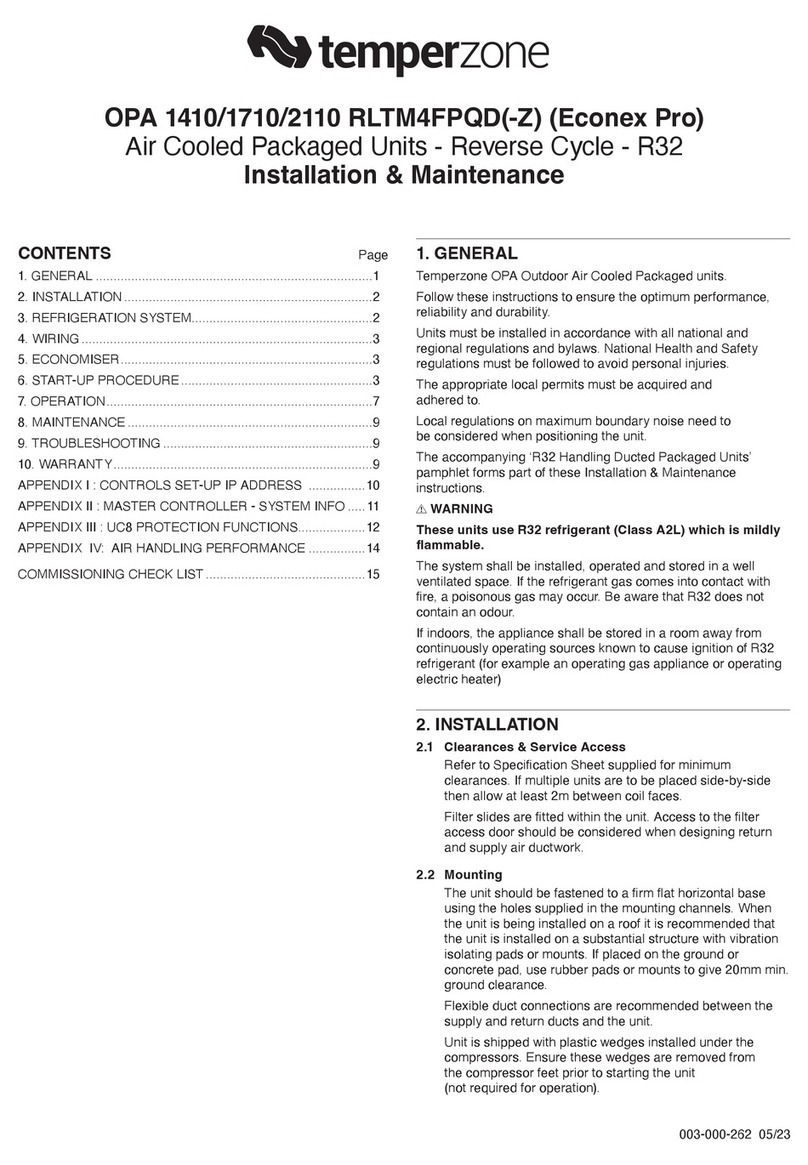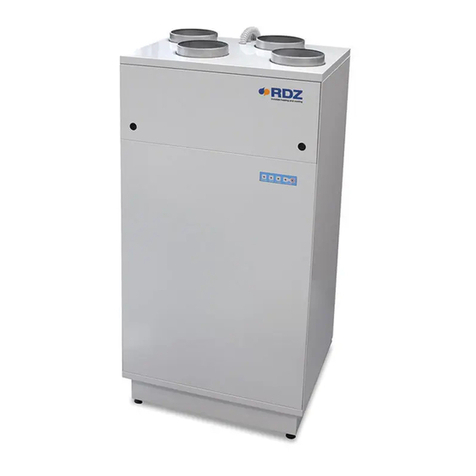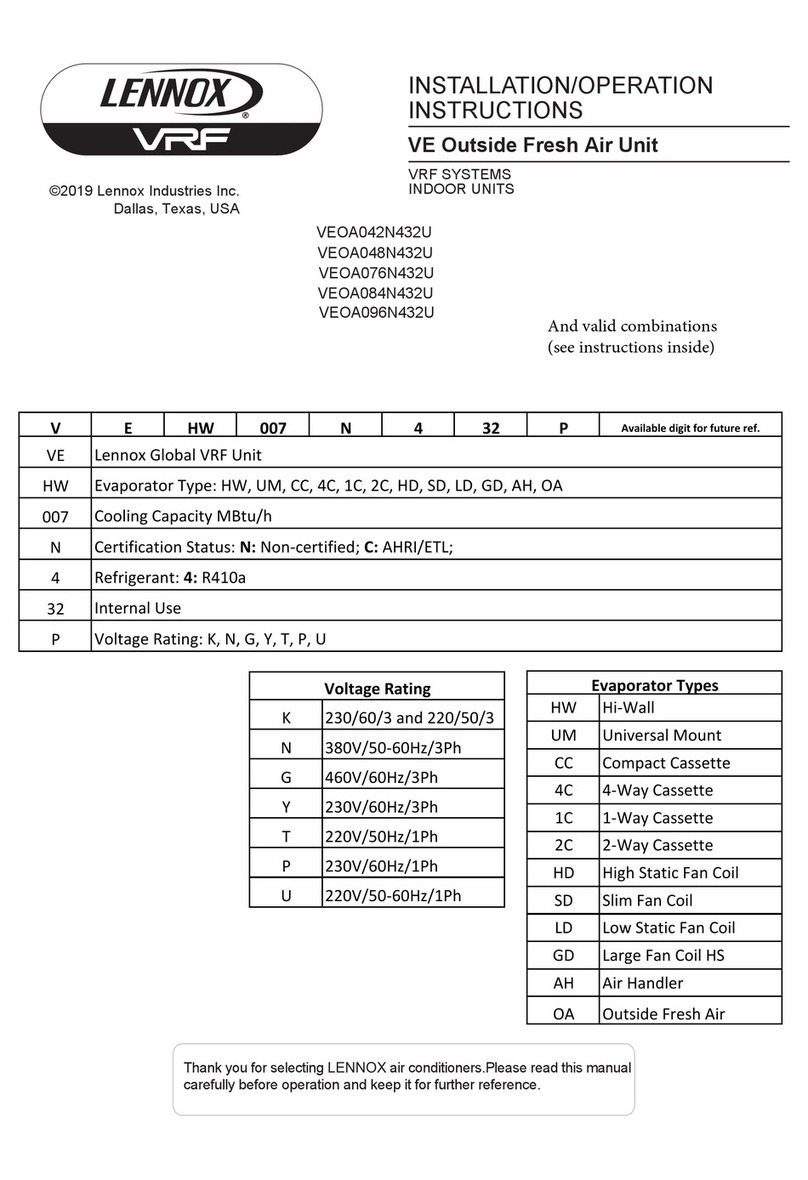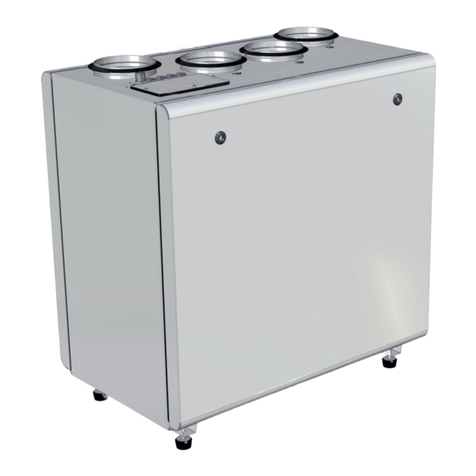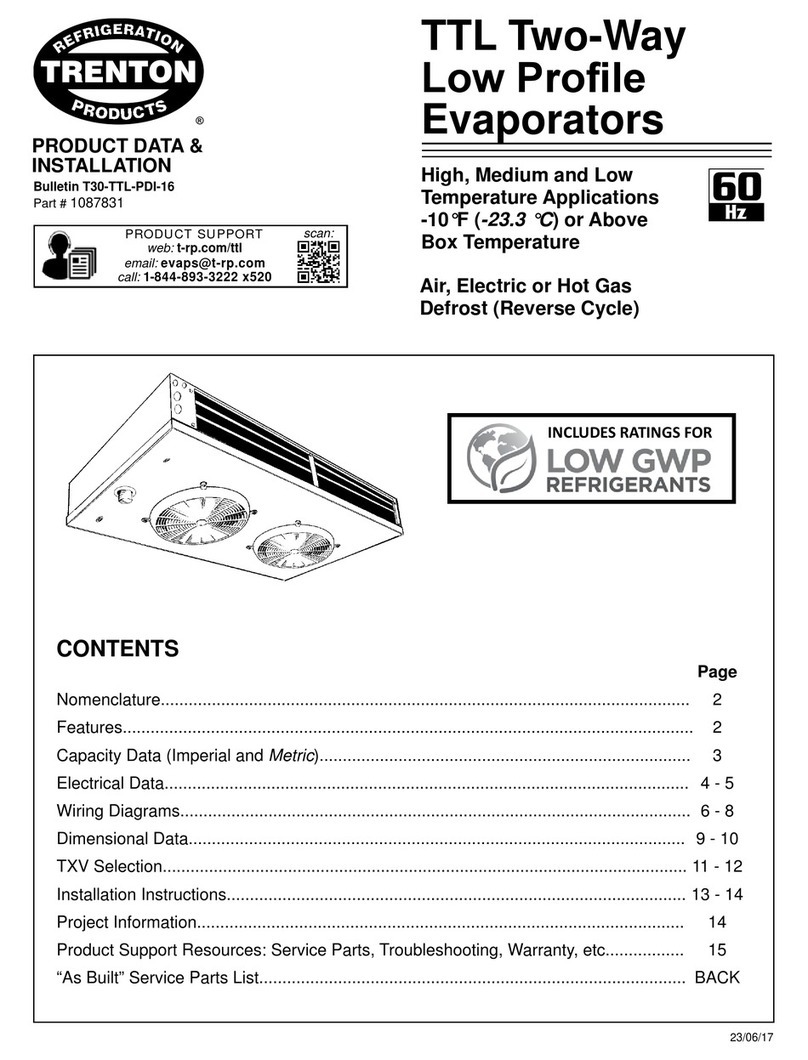
INSTALLATION INSTRUCTIONS
The installation and start-up of evaporators should only be
performed by qualied refrigeration mechanics.
This equipment should be installed in accordance with all
applicable codes, ordinances and local by-laws
INSPECTION
Inspectallequipmentbeforeunpackingforvisiblesignsof
damage or loss. Check shipping list against material received to
ensure shipment is complete.
IMPORTANT: Remember, you, the consignee, must make any
claim necessary against the transportation company. Shipping
damage or missing parts, when discovered at the outset, will
prevent later unnecessary and costly delays.
If damage or loss during transport is evident, make claim
to carrier, as this will be their responsibility, not the
manufacturer’s.
Shouldcartonbedamaged,butdamagetoequipmentisnot
obvious,aclaimshouldbeledfor“concealeddamage”withthe
carrier.
IMPORTANT: The electrical characteristics of the unit should
be checked at this time to make sure they correspond to those
ordered and to electrical power available at the job site.
Save all shipping papers, tags and instruction sheets for
reference by installer and owner.
LOCATION
The unit location in the room should be selected to ensure
uniform air distribution throughout the entire space to be
refrigerated. Be sure that the unit does not draw air in, or blow
directly out, through an opened door and that the product does
not obstruct the free circulation of air.
Consideration should be given to the coil location in order to
minimizethepipingrunlengthtothecondensingunitandoor
drain
CLEARANCES
This evaporator draws air through the coil and discharges air
fromthefanside,andthusadequateclearanceshouldbemade
on the entering face of the coil to ensure even unrestricted air
owthroughthecoil.Thisdistanceshouldbeequaltotheheight
of the coil or more.
Ensure enough room is left at the ends of the coil for servicing.
MOUNTING
This evaporator is supplied with shipping legs to allow units to be
shipped in an upright position. Units can be lifted into place with
shipping skid attached to mounting legs.
Hanger brackets take up to 5/8” (15.9 mm) hanger rods. After the
evaporator is hung in place, remove the bolts attaching the skid
to the legs.
DRAIN LINE
Iftheevaporatorismountedushtoceiling,thestaggered
hanger will provide a positive pitch for drainage.
If units are suspended below the ceiling, the installer must
provideadequatepitchtotheunitbyadjustingthelocationofthe
hanger rod nuts.
Note: Checkforadequatedrainagebypouringwaterintothe
drain pan.
Ensure that the drain pan has sucient slope for proper
drainage (prevention of ice build up / blockage in pan).
Insulated copper tube should be run from the drain connection,
sloping at least 4” (102mm) per foot. A trap located outside of the
room should be provided to prevent warm air entering through
the tubing. Connection should be made to proper drainage
facilities that comply with local regulations.
If room temperatures are below freezing, it is necessary to heat
the drain line to prevent condensate from freezing in the drain
line. Electric heating cable or electric tape (by others) is used
for this purpose. The drain line heater should be connected for
continuous operation; it is also recommended that the drain
line be insulated. A heat output of 20 watts per lineal foot of 1”
(25mm) drain line in a 0°F (-18 °C) room is usually satisfactory.
115 volt cable and tape is available from your local refrigeration
wholesaler. Two 115 volts heaters (by others) of the same
wattage may be wired in series for use on 230 volt system
PIPING
Refrigerant line sizes are important and may not be the same
size as the coil connections (depends on the length of run). If in
doubt, consult “Recommended refrigerant line sizes” charts.
WIRING
Wire system in accordance with governing standards and local
codes. Enclosed typical wiring diagrams are for reference only.
Refer to unit data plate for operating current, minimum ampacity
and maximum fuse sizing for fan motors.
NOTE: Electrical wiring is to be sized in accordance with
minimum ampacity rating.
For ease of identifying the proper wiring terminals, unit wiring
iscolourcodedandterminalblockconnectionsareidentied.
When fan delay thermostats (combination fan delay and
defrost termination) are installed, on start-up, the fans do not
operate until the coil temperature is reduced to approximately
20°F (-6.7°C). It is normal for the fans to cycle a few times until
the room temperature is brought down. At higher evaporating
temperatures this control is of an adjustable type, and proper
adjustmentisrequired.
The defrost termination control is adjustable and may be set
at a minimum of 40°F (4.4°C) (fully CW) to a maximum of 75°F
(23.8°C) (fully CCW). Normal setting is 55°F (12.8°C). This can
be increased if the defrost heaters are terminated too soon (frost
still left) or if terminated too long (steaming of coil). Time clock
should be set for a fail-safe termination of approximately 45
minutes.
Ahingedendpanelprovidesquickaccesstotheelectrical
compartment.
SYSTEM CHECK
Before Start-Up:
1. All wiring should be in accordance with local codes.
2. All refrigerant lines should be properly sized.
3. Electricdefrostsystemsshouldincludealiquidline
solenoid valve.
4. Thorough evacuation and dehydration has been
performed.
5. The suction, discharge and receiver service valves
must be open.
6.Thesystemshouldincludealiquidlinedriermoisture
indicatorandsuctionlter.
7. Pour enough water into the drain pan to allow a good
check on drainage and seal the trap.
After Start-Up:
1. If necessary, temporarily by-pass fan delay control to
run fans until room temp is lowered. (Run jumper wire
from terminal N to F on circuit terminal block).
2. Check the compressor oil level to ensure the correct
oil charge.
3. Be sure that the expansion valve is properly set to
provide the correct amount of superheat (should be
around 70% of operating T.D.)
4. Heavy moisture loads are usually encountered when
startingthesystemforthersttime.Ifthecoil
temperature is below freezing, this will cause a
rapid build-up of frost on the coil. During the initial pull
down, frost build-up should be watched and defrosted
manuallyasrequired.
5. Check for proper evaporator fan blade rotation.
THP 60Hz
